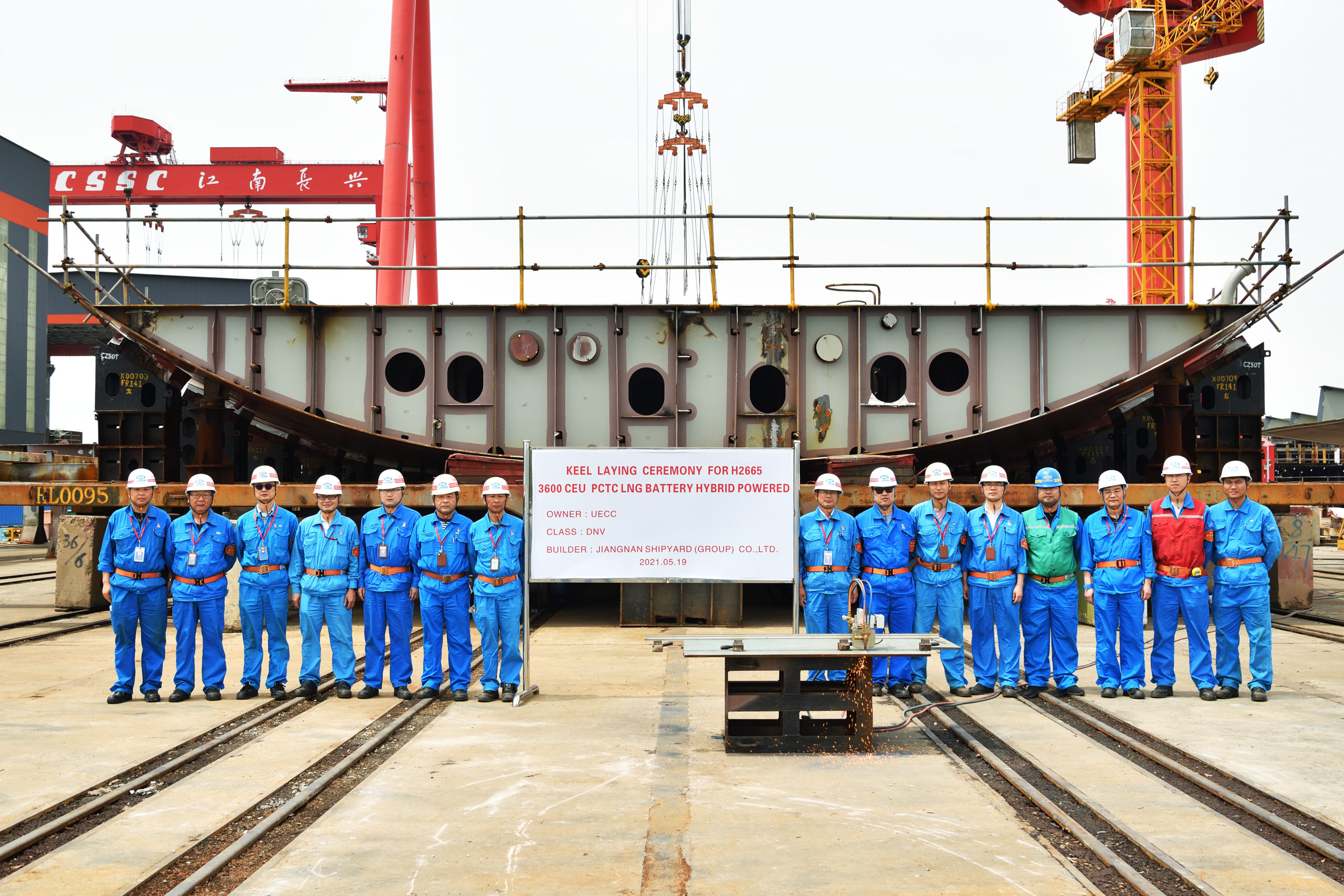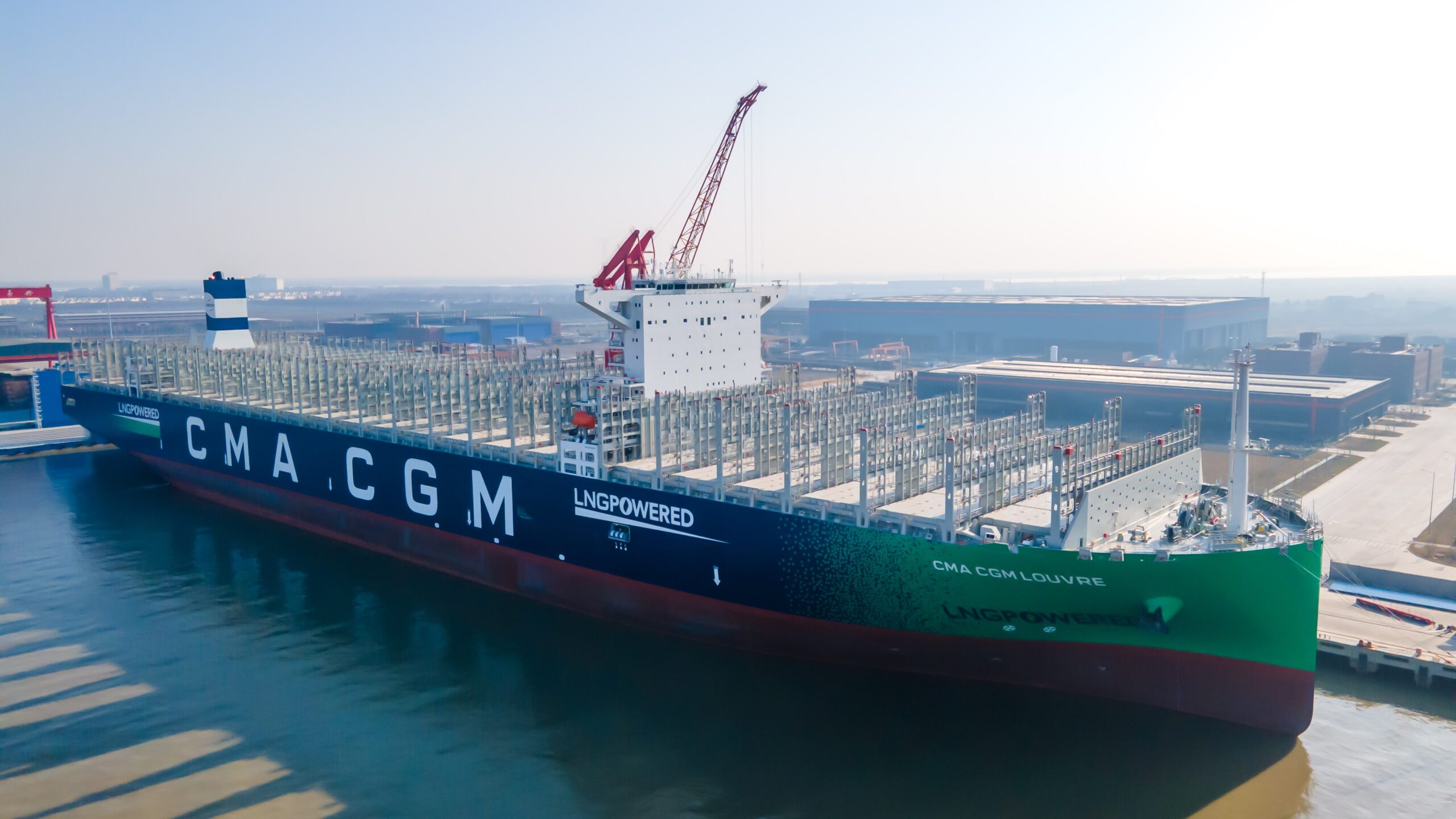Press Release: Construction of the third in a series of ground-breaking newbuild LNG battery hybrid PCTCs for United European Car Carriers (UECC) reached a significant milestone this week with keel-laying at a Chinese yard.
The ceremony at Shanghai’s Jiangnan Shipyard saw the laying of the keel for the hull designated H2665 as part of an ambitious newbuild programme in which UECC is taking the lead in sustainable shipping by developing the first-ever vessels to run on hybrid propulsion power fuelled by LNG.
“When they hit the water, these state-of-the-art vessels will represent a sea change for the industry by using available LNG technology to drastically cut emissions on short sea shipping in Europe,” says UECC chief executive Glenn Edvardsen.
The first newbuild is due for delivery later this year after being launched at the yard last month, with the second and third vessels set to be delivered in the first half of 2022.
Edvardsen says the trio represent “a giant leap towards decarbonisation” as the use of a battery-hybrid solution will take UECC beyond the IMO target of a 40% reduction in carbon intensity from 2008 levels by 2030.
The three vessels will also meet the IMO’s Tier 3 NOx emissions limitations entering into force in the Baltic Sea and North Sea from keel lays this year.
Operational efficiency
Battery power on the new vessels will improve operational efficiency and further reduce emissions through peak shaving, in addition to handling partial accommodation load and driving auxiliary equipment.
This will enable them to recharge batteries while at sea using a shaft generator in order to use battery power for manoeuvring in ports in line with port requirements to cut emissions.
The use of LNG will reduce emissions by around 25% as the fuel emits zero SOx and negligible amounts of particulate matter and NOx, while it is also affordable and widely available through an existing bunkering network.
In addition, the next-generation newbuild trio will be equipped with dual-fuel engines for main propulsion and auxiliaries that will also be able to use carbon-neutral and synthetic drop-in fuels as these become commercially available in the future.
“UECC is taking the initiative in the industry to achieve decarbonisation using currently available technologies, rather than waiting for the perfect solution,” Edvardsen says.
“At the same time, these vessels will be highly cost competitive due to operational efficiency and reduced fuel costs.”
‘Investing in the future’
He adds that being able to offer eco-friendly ship operations will be a key differentiating factor in winning cargo contracts in the future shipping market due to increased pressure from regulators, port authorities and clients.
With an overall length of 169 meters, a width of 28 meters and a car carrying capacity of 3,600 units on 10 cargo decks, the new vessels are highly flexible, enabling them to accommodate a wide range of high & heavy and break-bulk cargoes, in addition to cars and trucks.
The addition of the three newbuilds will give UECC five eco-friendly vessels – including two dual-fuel LNG-powered PCTCs already on the water – making up half of its 10-vessel fleet.
“No other short sea company, or deep sea for that matter, can demonstrate such a sustainable fleet,” Edvardsen says.
He adds UECC is “investing in the future” with backing from parents NYK and Wallenius Lines that “have sustainability in their DNA”.


































